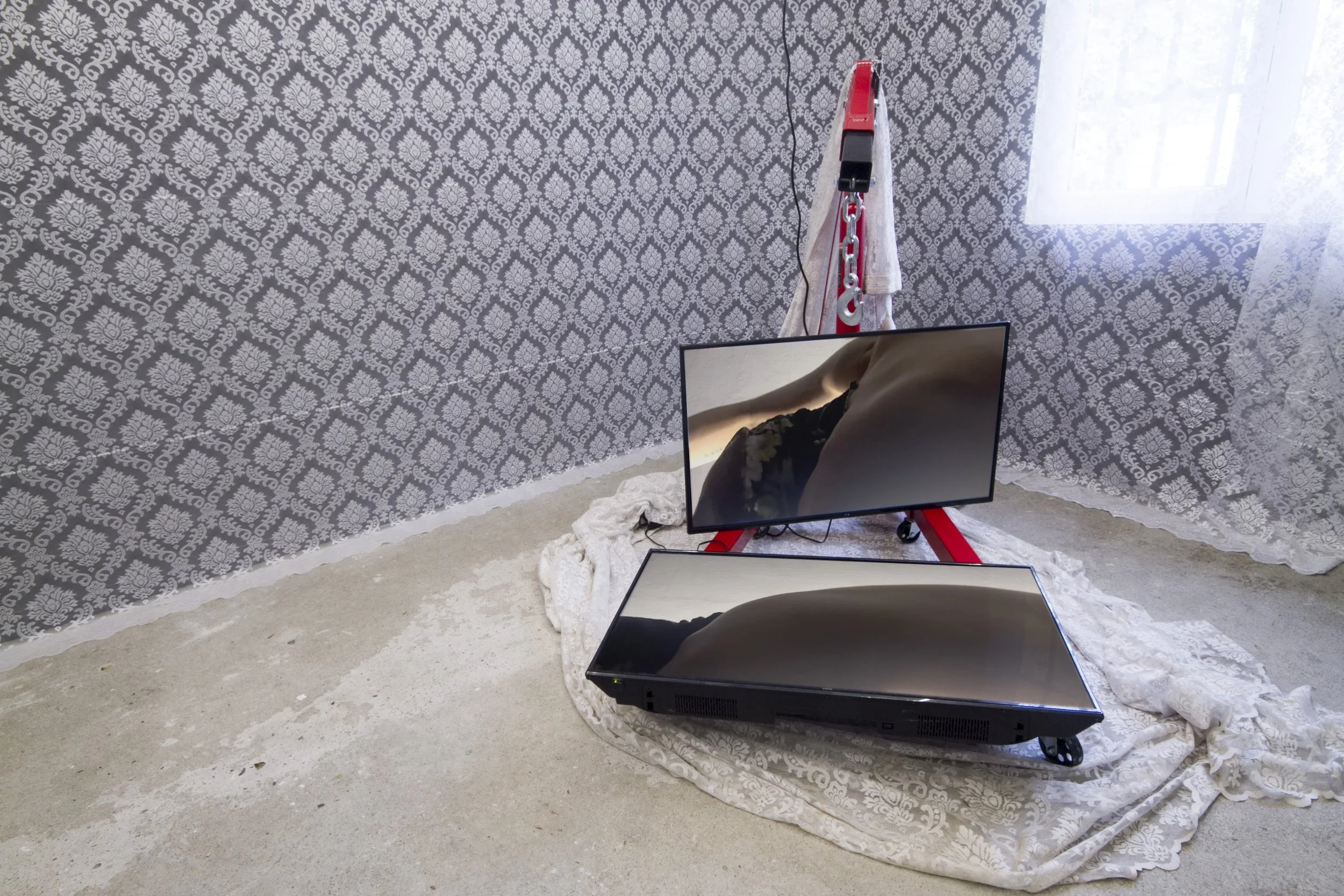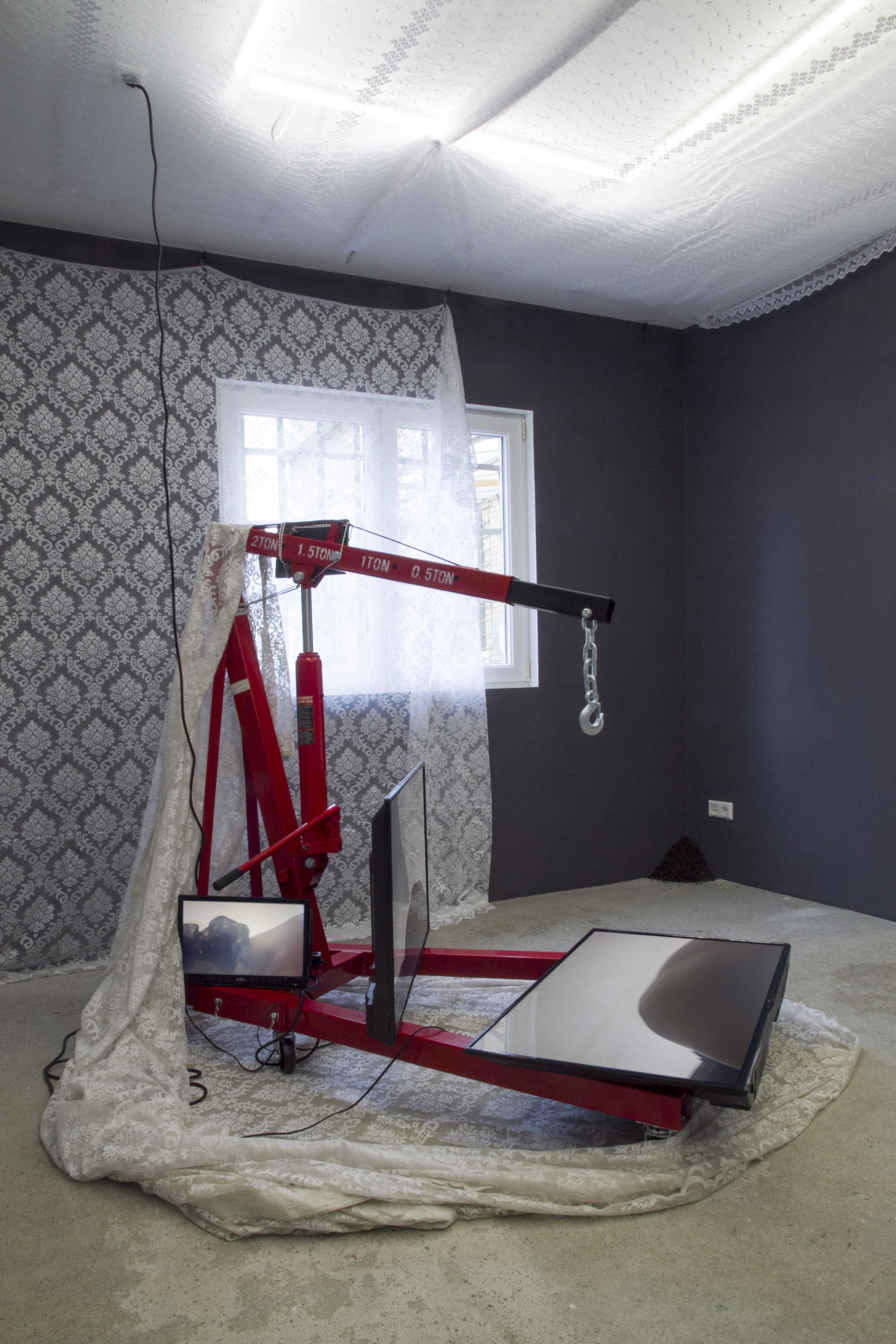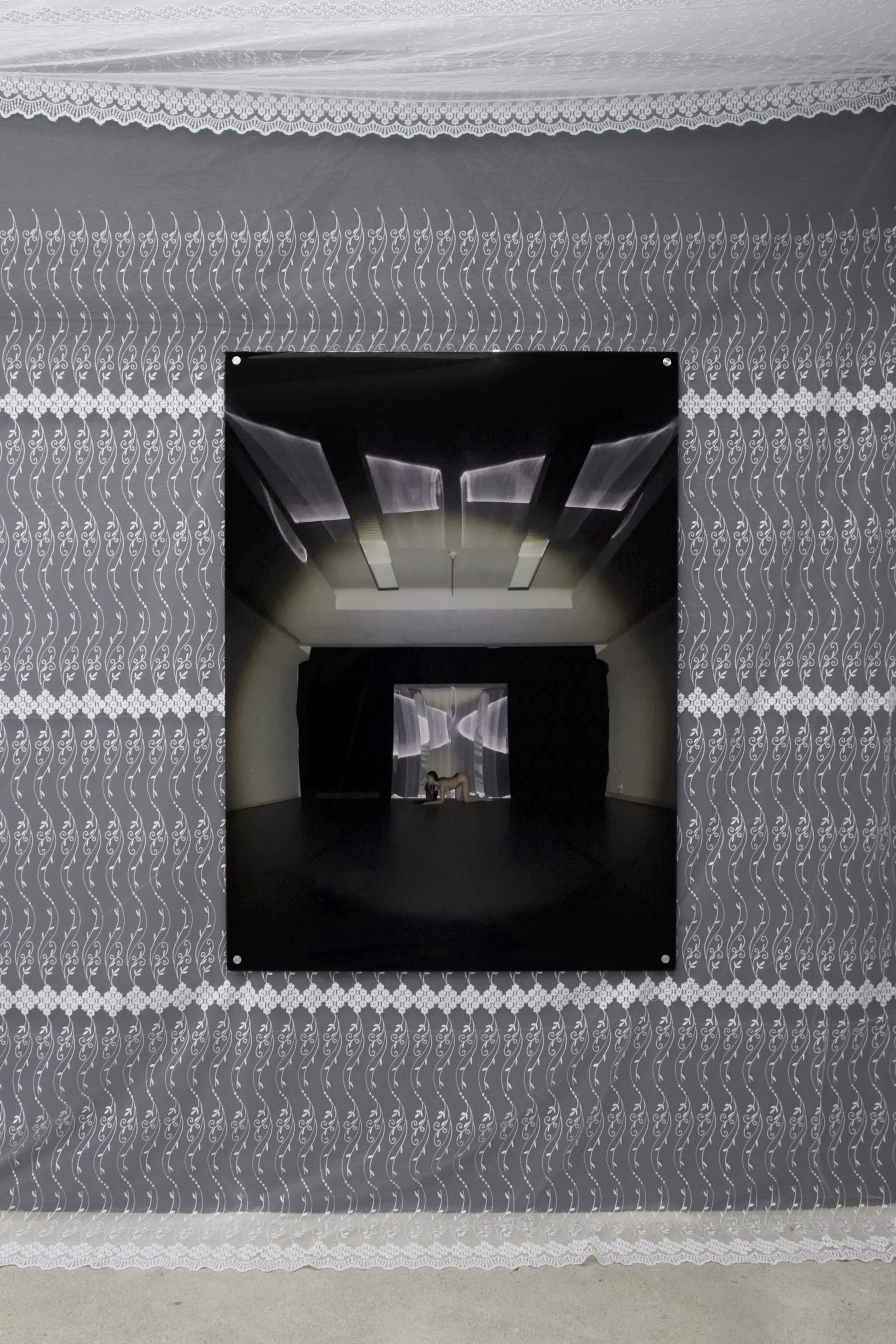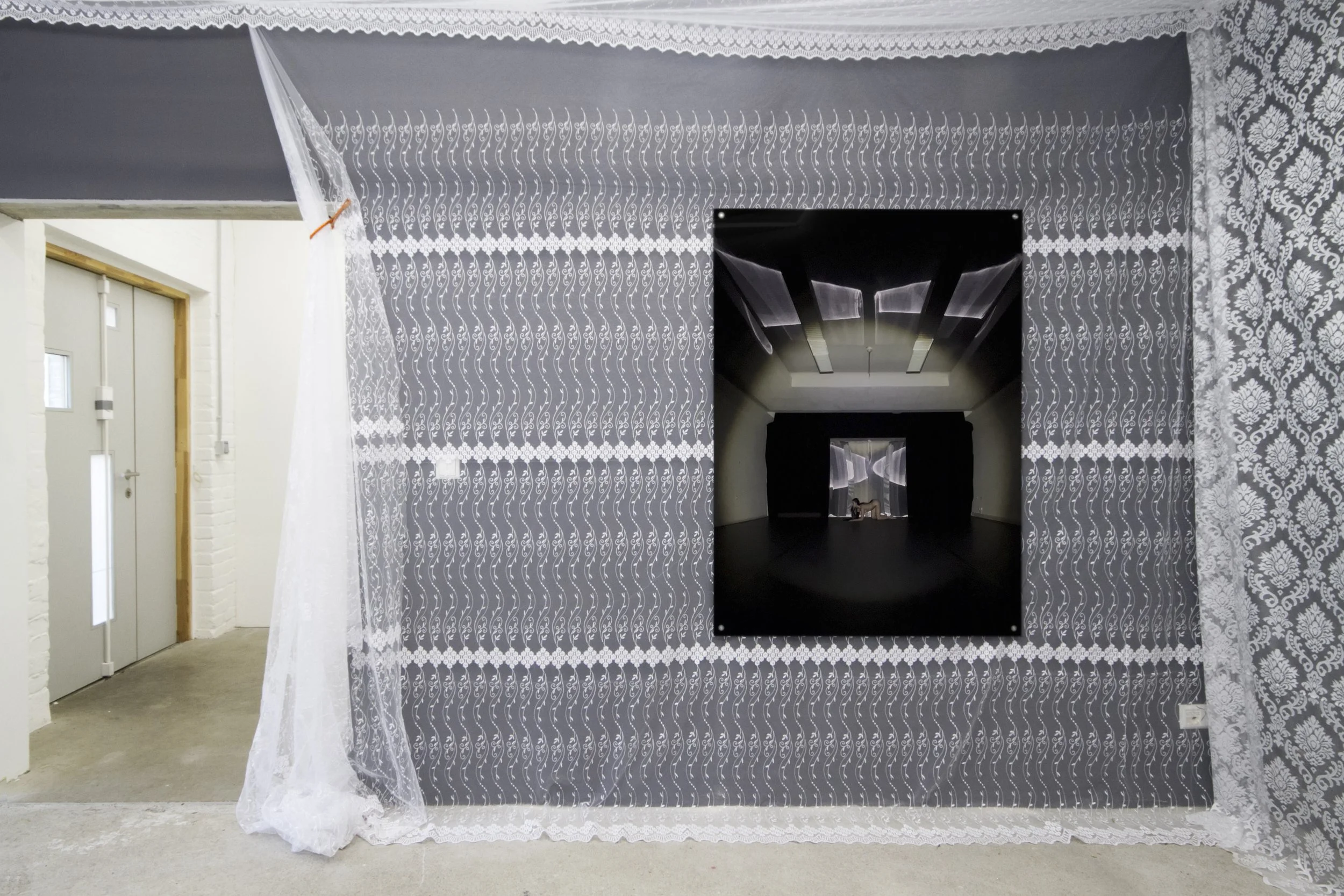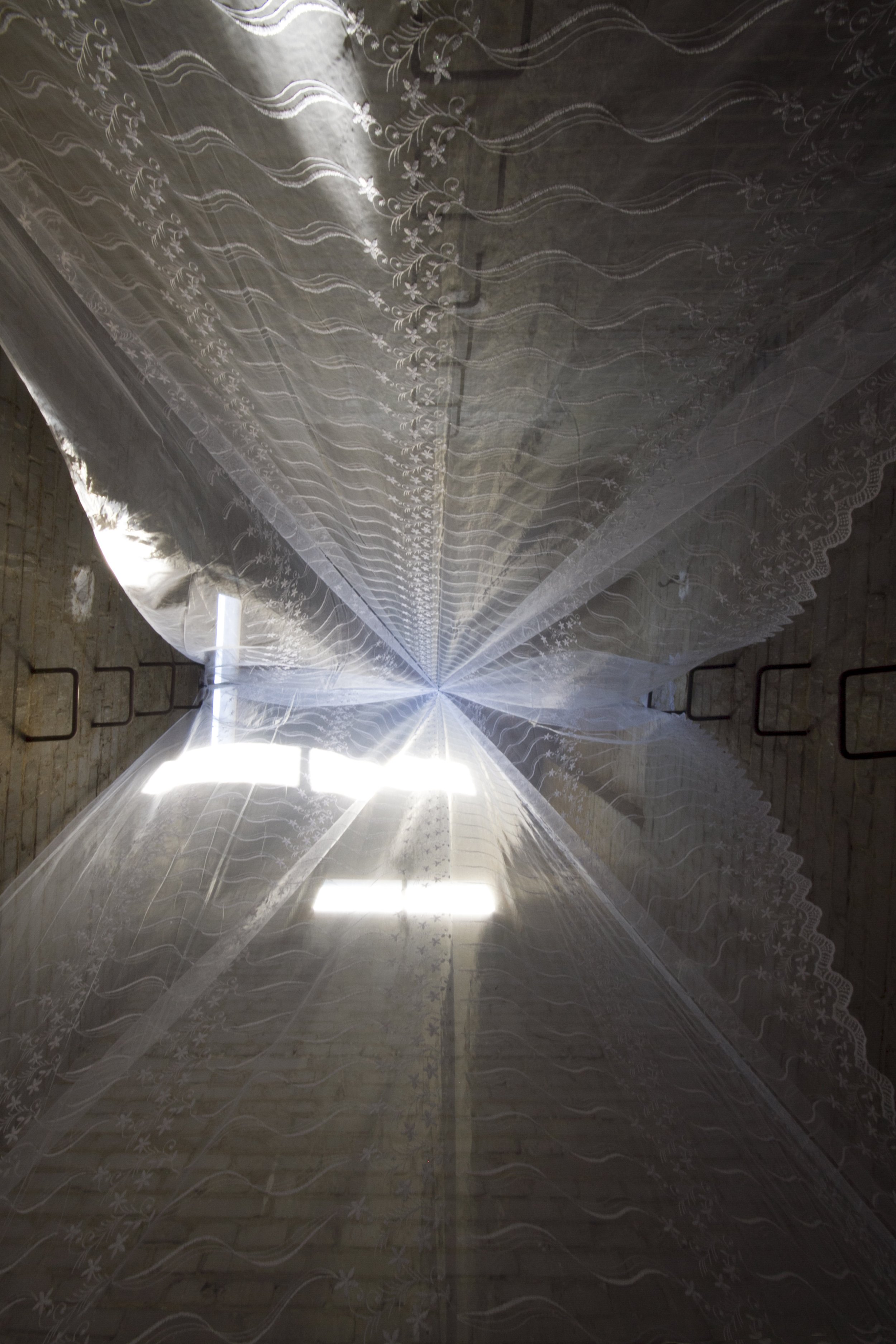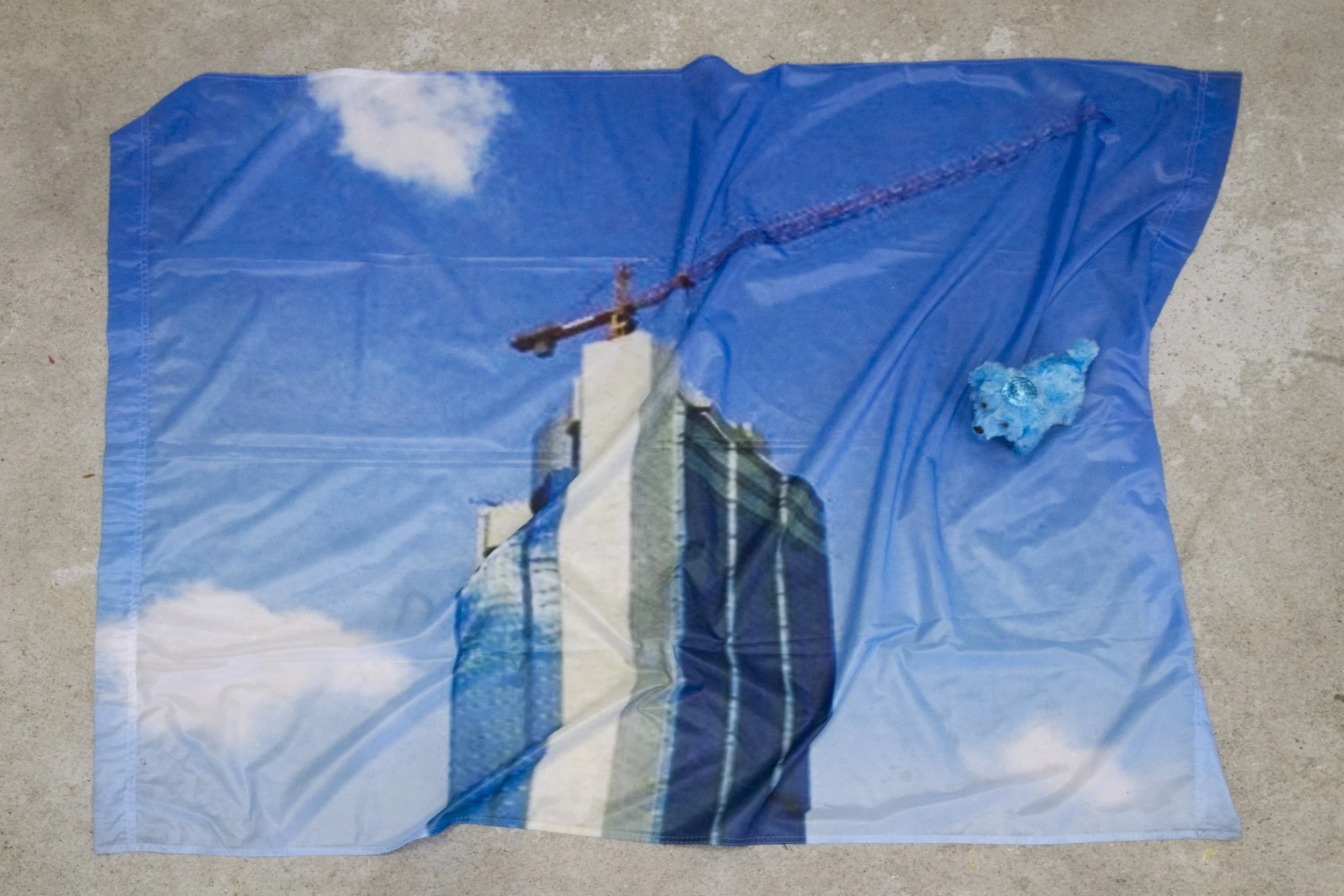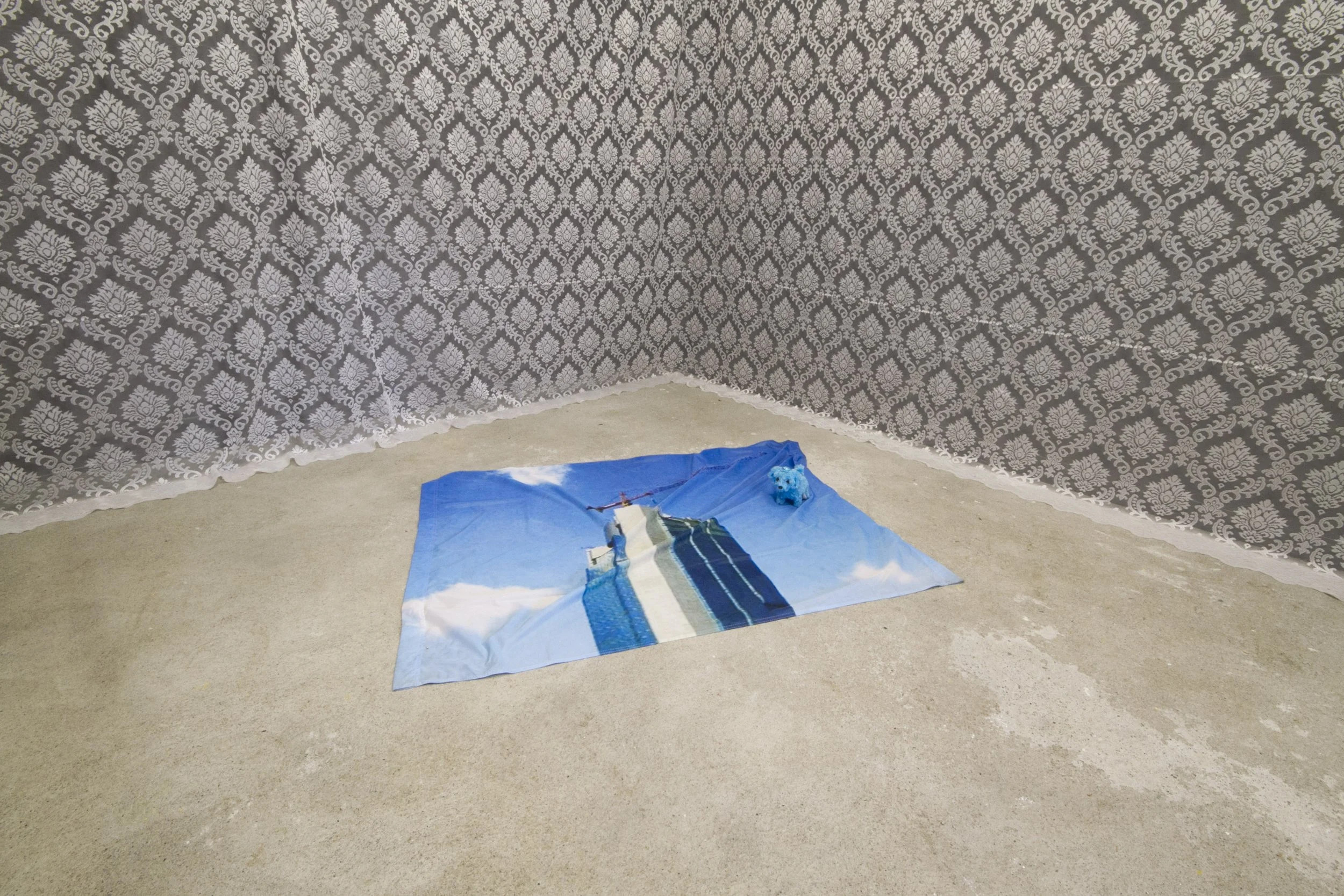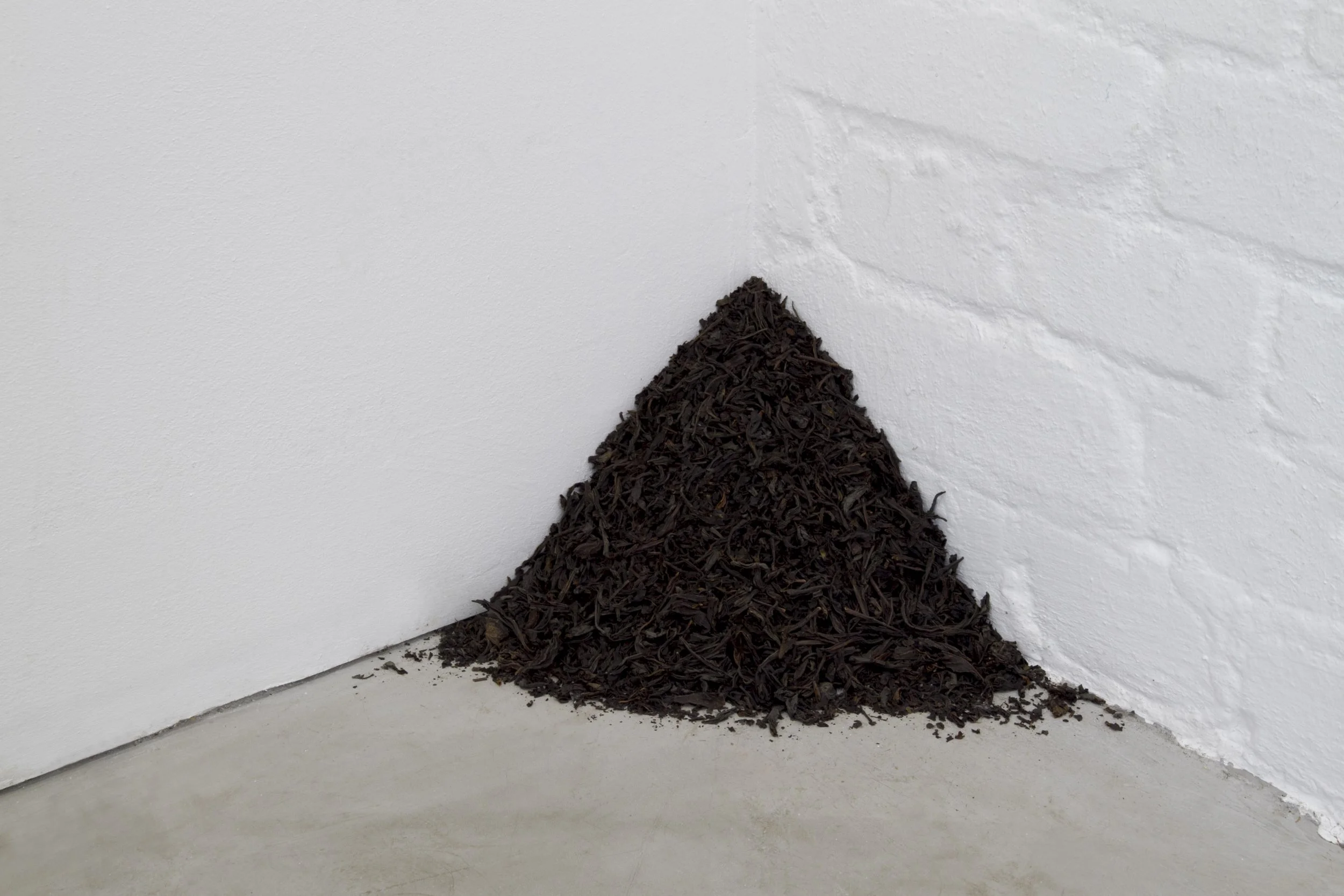Göksu Kunak
Dhikr
curated by Leon Kruijswijk
Dhikr presents the newest videos and installations by the artist and performer Göksu Kunak. This body of work results from their larger research into notions of camouflage and self-censorship, and shifting interpretations of Acâibü’l-mahlûkät. This 13th century Persian/Ottoman cosmology, geography and science book includes mythological and made-up characters to explain the world, which has recently been republished in Turkey with a foreword by its current president (Acayip Mahlukat in Turkish). The book mentions humans, djinnis, special creatures in the sky; precious stones, mountains, oceans; plants, and trees.
The images depict elephant-humans with wings and cow-reptiles among others. In short, it is a story of a highly fictional world full of hybridization and idiosyncrasy.
With Dhikr, Kunak explores the potential of these mythological creatures to move beyond entrenched understandings of camouflage as a figure-ground relationship. Instead, the artist probes the Islamic notion of Taqiyya in Islam, as addressed by Reza Negarestani in the dystopian theory-fiction book Cyclonopedia. To do so, Kunak speculates on modes of such a hyper-camouflage.
In the four-channel video installation Niche Landscape I–IV, Kunak is in the quadruped position, moving back and forth. Only their upper body is partially visible, and rendered abstract or landscape-like. The movements are repeated obsessively, as if performed to transcend into another state of mind and being. Considering the exhibition title, they resemble dhikr: a form of Islamic prayer in which phrases or prayers are repeatedly chanted in order to remember Allah and to eventually enter a higher level of heaven. However, because of the zoomed-in moving image, references to sexual, animalistic or sporty activities emerge too. Kunak utilizes the abstraction and ambiguity of the closeup as a camouflage method and contrastingly points out a myriad of ways of transgression.
In The Niche, such transgression leads to transformations. Slow and repetitive movements make Kunak appear both animalistic and cyborgian, which is amplified by outfits consisting of barely anything to an almost tent-like dress. Kunak changes forms to become a pop star, porn star, a consultant, a jihadist, a corrupt politician, a U.S. war machine, a femdom*me and so on. The outer layer becomes a shell, or a place for shelter, useful when nomadically navigating alien–or not so alien–surroundings. Here, the notion of Taqiyya is utmost visible, in the sense of merging with a character; gender as camouflage; hiding in a niche for shelter and becoming one with an environment at the end. All is done as a mode of survival to cope with threats and fear. However, such veiling processes do not mean complete invisibility. In the vein of Felix Gonzalez-Torres’s artistic methodology, invisibility does not equal absence and vice versa, as long as one can identify the codes.
Multiple elements of the overall installation metaphorically refer to contemporary culture in Turkey. The building depicted on the flag is positioned on a hill in central Ankara and its construction has remained unfinished with a crane forgotten on top of it for twenty years. As such it has become a symbol of debatable national real estate development policies of the past decades. The fabric mounted to the walls and ceiling can be found as curtains in numerous households across the country to create a distance between the public and the domestic sphere. Kunak used the fabric to make structures like inner tents to render the levels of replaceability and mobility of such a protective layer visible. The large print Ajaib Mahluqat depicts a hybrid creature in a position oscillating between hiding and coming to the fore. Piles of black tea refer to the warm drink that is widely used as a social lubricant.
Taking the two books as the creative trigger for Dhikr, Kunak shapeshifts into new characters and transmutates into various forms in order to probe tactics for dealing with an imaginary (!) dictator and other political threats in a sci-fi realm. Dhikr ultimately addresses the potential of the nomadic in varying temporalities, South West Asian politics, (in)visibility and (un)veiling, Taqiyya and Islam, time and decay, dust and porn.


